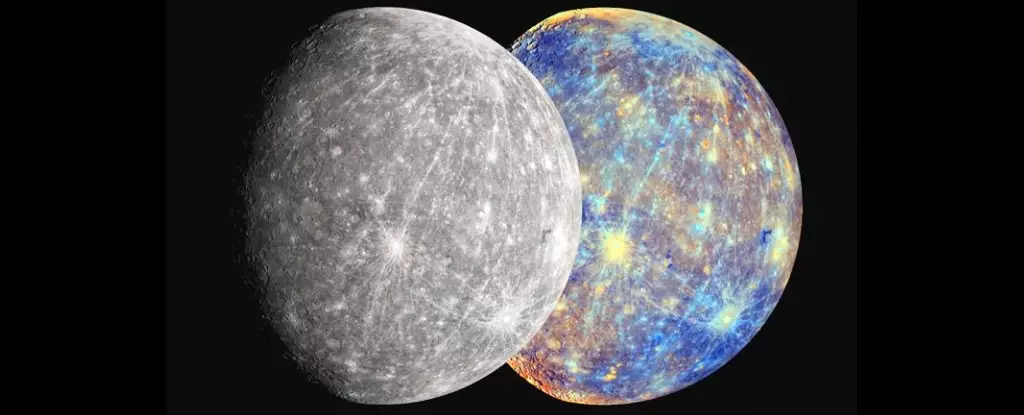July 2025 promises a celestial spectacle that shouldn’t be missed—an exceptional opportunity for skywatchers to observe Mercury at its most prominent. For enthusiasts eager to tick off the solar system’s innermost planet from their cosmic bucket list, the evenings of July offer a prime chance. Mercury’s greatest elongation — the point when it appears farthest from the Sun in our sky — aligns perfectly with the early days of July, bringing this elusive world into view just after sunset. This alignment is not merely a routine event; it’s a fleeting window where Mercury’s visibility is at its peak, beckoning both amateurs and seasoned astronomers to seek it out.
What makes Mercury special during this period is its position relative to Earth and the Sun. Orbiting the Sun every 88 days, Mercury reaches these elongation points six times annually, alternating between east and west, which means its appearance and visibility fluctuate throughout the year. July’s elongation occurs just prior to Mercury’s aphelion—its farthest distance from the Sun—making the planet’s brightness and apparent size particularly intriguing for observers. Despite its proximity to the Sun, Mercury can be seen low in the western sky, shining at magnitude +0.5, a brightness that can be glimpsed with minimal equipment if one knows where to look.
The timing is perfect for those in the United States, where the July evenings coincide with festive Fourth of July fireworks—an ideal backdrop to simultaneously witness this celestial event. As the sun dips behind the horizon, Mercury emerges just a handful of degrees above the western horizon, roughly 30 minutes after sunset. For those eager to push their observational limits, Mercury’s proximity to the bright open cluster Messier 44—also known as the Beehive—on July 2nd offers a stimulating challenge and an added layer of cosmic beauty. The planet’s fleeting visibility underscores the importance of timely observation; Mercury seldom offers such an accessible view, especially for amateur astronomers who might hesitate to try their luck.
The Dynamic Dance of Planets and the Moon in July’s Skies
July isn’t just about Mercury. The month promises a celestial dance involving Mars, the Moon, and even remnants of space exploration. While Mercury shines brightly during twilight, Mars is also making its final appearances in the evening sky, fading from view as the month progresses. Still, Mars adds to the richness of this summer’s dusk scene, making the evenings lively for viewers with telescopes or binoculars. The waning Moon, meanwhile, plays a pivotal role in some of July’s most stunning sky events—none more spectacular than the occultation of the Pleiades.
On July 20th, in North America, the slender crescent Moon will pass in front of the famed star cluster Messier 45—an event known as an occultation. Such spectacles are rare and awe-inspiring, providing a dramatic opportunity to observe the Moon acting as a cosmic gatekeeper, temporarily obscuring the sparkling stars of the Pleiades. This event enhances the visual storytelling of the night sky, bridging the gap between celestial objects and reminding us of the ephemeral beauty that unfolds above.
Aside from its visual allure, July also offers the chance to observe planetary motion in real-time. Mercury, after its greatest elongation, will begin to transition into a crescent phase, revealing a changing disk size and illumination. The planet appears as an unevenly lit sphere, with its half-phase at elongation giving way to a thinner, more crescent-shaped silhouette later in the month. The planet’s intriguing physical features—similar to our Moon’s craters and maria—are just waiting to be explored through a telescope.
Meanwhile, space enthusiasts should keep an eye on the International Space Station (ISS), which will be visible in full illumination during early July. From July 6th to July 11th, the ISS will streak across the sky with its bright, steady glow—a reminder of human achievement and our ongoing advancements into space. Combining terrestrial planetary observations with the fleeting appearances of the ISS adds an extra layer of engagement for dedicated skywatchers.
What the Future Holds for Mercury and Why It Matters
While Mercury’s current apparent beauty is captivating, it’s the planet’s broader story that continues to appeal to scientists and astro-enthusiasts alike. NASA’s recent confirmations about new interstellar objects passing through our solar system push the boundaries of our understanding, but Mercury remains a tantalizing target for exploration. Its harsh environment, characterized by extreme temperature swings, a thin exosphere, and comet-like sodium tails, offers clues into planetary formation and solar wind interactions.
Indeed, the ongoing missions—such as the JAXA/ESA’s BepiColombo—set to arrive at Mercury in late 2025, will dramatically expand our knowledge base. These missions aim to unravel the planet’s geological history, surface composition, and magnetic field, revealing insights that remote sensing alone cannot provide. The discovery that Mercury emits sodium tails akin to comets underscores its dynamic and complex nature, challenging long-held assumptions about terrestrial planets.
For amateur astronomers, Mercury’s swift orbit and fleeting visibility have long made it an elusive target. Yet, the combination of observational opportunities and advancing space missions ensures that our understanding continues to grow. When viewed through a telescope—especially during its greatest elongation or as it transitions through phases—Mercury becomes more than just a point of light; it becomes a gateway to understanding planetary processes and the intricacies of our solar neighborhood.
In sum, July 2025 isn’t merely a good month for casual skywatching—it’s an invitation to engage deeply with the cosmos. Whether through hunting Mercury at dusk, marveling at the occultation of the Pleiades, or simply observing the night sky’s evolving tapestry, this period proves why space remains one of the most compelling frontiers for human curiosity. As new missions promise to lift the veil on Mercury’s secrets, our own observations keep us connected to the universe’s ongoing story.

